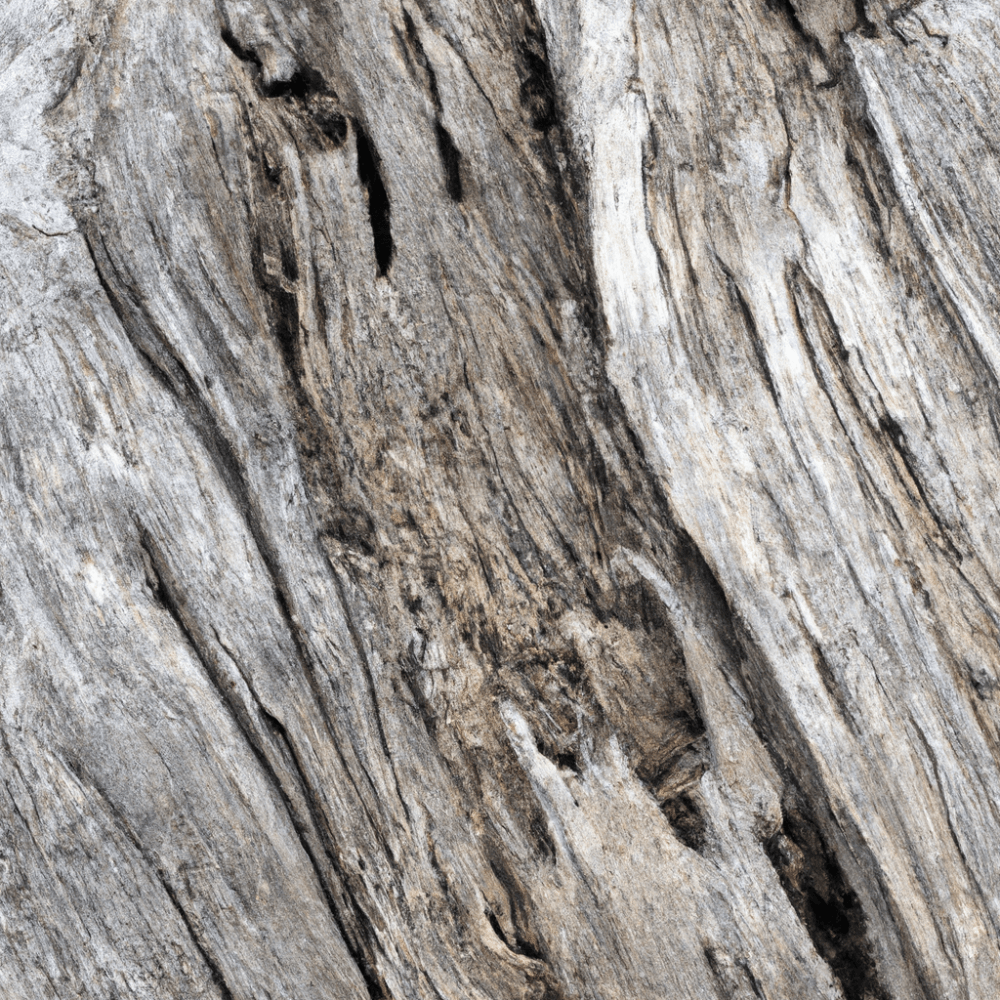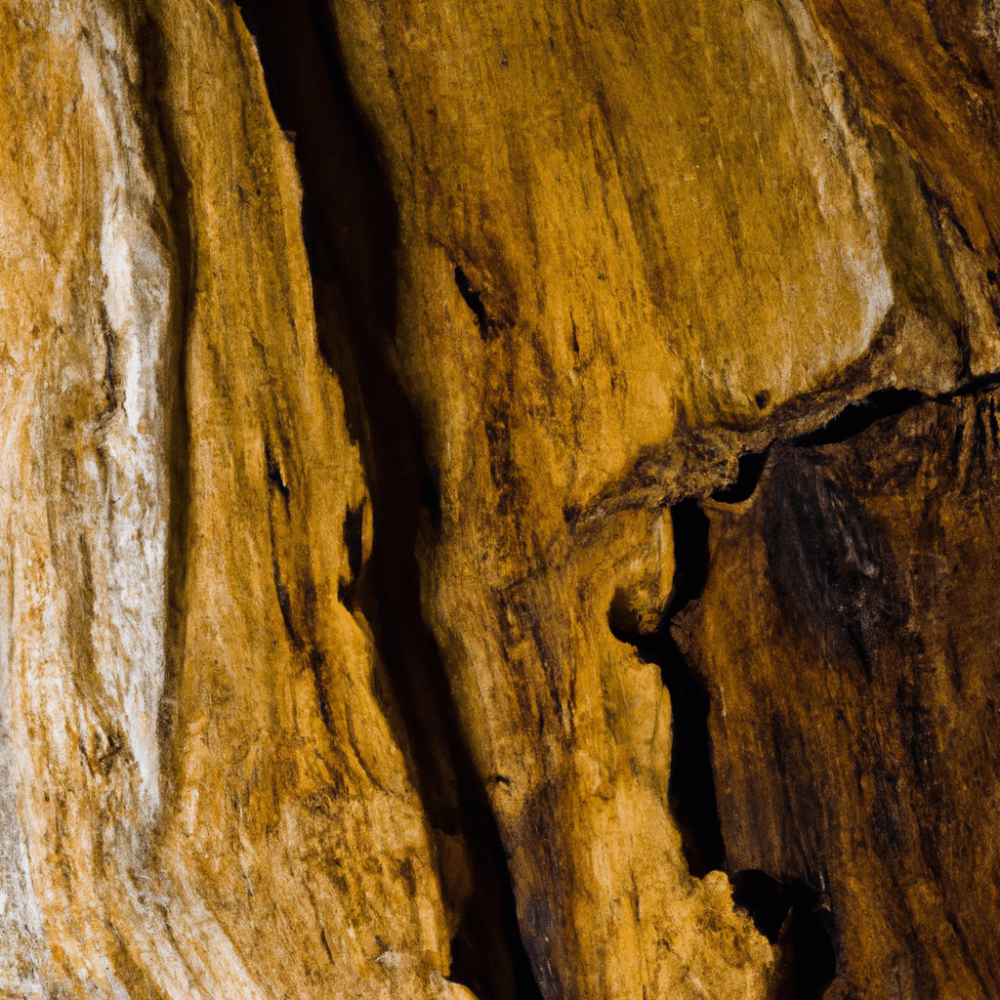Imagine you’re strolling on a beautiful, deserted beach, admiring the unique pieces of driftwood scattered along the shoreline. But have you ever wondered if those weathered treasures could be harboring a hidden danger? In this article, we explore the intriguing question: Can driftwood have woodworm? Prepare to uncover the secrets behind these seemingly innocuous pieces of nature’s art.

What is driftwood?
Driftwood is a type of wood that has been washed ashore by the action of wind, waves, and currents. It is often found along beaches, riverbanks, or other bodies of water. This wood typically comes from trees or branches that have fallen into the water and have been transported and shaped by the forces of nature. Driftwood can have a unique and weathered appearance, making it a popular choice for various decorative and functional purposes.
What are woodworms?
Woodworms are the larvae of certain types of wood-boring beetles. These tiny insects lay their eggs in cracks and crevices of wood, and when the larvae hatch, they start tunneling through the wood, feeding on its nutrients. As they grow, woodworms can cause significant damage to the structure and integrity of the wood. The adult beetles eventually emerge from the wood, leaving behind small exit holes.
Can driftwood be infested with woodworms?
Yes, driftwood can be infested with woodworms. As driftwood spends time in the water and is exposed to various environmental conditions, it becomes susceptible to infestation by wood-boring beetles. The eggs of these beetles can easily be transported by the water and attach themselves to the wood’s surface. Once the eggs hatch, the woodworm larvae begin their destructive feeding process, causing damage to the driftwood.
Understanding the possibility
While infestation in driftwood is possible, it’s essential to recognize that not all driftwood is infested with woodworms. The likelihood of finding woodworms in driftwood depends on various factors, including the type of wood, the location where the wood originated, and the conditions the wood was exposed to. However, it is always prudent to be cautious and take preventive measures to avoid potential infestation.
Factors that contribute to woodworm infestation in driftwood
Several factors contribute to woodworm infestation in driftwood. Firstly, the type of wood used for driftwood plays a significant role. Some types of wood, like pine and oak, are more prone to woodworm infestation due to their natural characteristics and nutrient content. Additionally, if the driftwood comes from an area with a high population of wood-boring beetles, the risk of infestation increases. Lastly, the length of time the driftwood has spent in the water and its exposure to moisture can also impact the likelihood of woodworm presence.
Identification of woodworm infestation
It’s crucial to be able to identify the signs of woodworm infestation in driftwood to take appropriate measures. By recognizing these signs early on, you can prevent further damage and preserve the aesthetics and integrity of the driftwood.
Signs to look out for
The presence of small exit holes on the surface of the driftwood is one of the most visible signs of woodworm infestation. These tiny holes, typically around 2mm in diameter, are where the adult beetles have emerged. Another indication of infestation is the presence of fine dust or frass near the exit holes. This frass is the waste material generated by the woodworm larvae as they tunnel through the wood. Additionally, weakened or crumbly wood, tunnels or galleries inside the driftwood, or the sighting of adult beetles may be signs of infestation.
Common types of woodworms found in driftwood
Various types of wood-boring beetles can infest driftwood. Some common ones include the Common Furniture Beetle (Anobium punctatum), the Deathwatch Beetle (Xestobium rufuvillosum), and the Powderpost Beetle (Lyctus spp.). These beetles have different preferences when it comes to the type of wood they infest and may exhibit slightly different signs of infestation. Identifying the specific type of woodworm can assist in determining the appropriate treatment or disposal method for the infested driftwood.

Preventing woodworm infestation in driftwood
Taking preventive measures to avoid woodworm infestation in driftwood can help you preserve its quality and longevity. Proper collection and preparation of driftwood are key to minimizing the risk of infestation.
Proper collection and preparation
When collecting driftwood, it is advisable to choose pieces that have been in the water for a shorter period. Such wood is less likely to be infested by wood-boring beetles. Inspect the wood carefully for any signs of infestation before bringing it home. Once collected, it is essential to dry the driftwood thoroughly to minimize moisture content, as this can attract wood-boring insects. Consider exposing the wood to direct sunlight or using a dehumidifier to expedite the drying process.
Treatment options for driftwood
Treating driftwood with appropriate products can also help prevent woodworm infestation. There are various insecticides and wood preservatives available in the market specifically designed to combat wood-boring insects. Ensure you choose a product suitable for the type of wood and follow the instructions provided by the manufacturer carefully. Treating the driftwood with insecticides will create a protective barrier, deterring woodworms from burrowing into the wood.
Protective measures to consider
In addition to collection and treatment, implementing protective measures can further reduce the risk of woodworm infestation in driftwood. Storing the driftwood in a dry and well-ventilated area can help prevent moisture buildup, making it less attractive to wood-boring beetles. Regularly inspecting stored driftwood for signs of infestation and promptly addressing any issues can also prevent the spread of woodworms.
Dealing with woodworm-infested driftwood
If you discover that your driftwood is infested with woodworms, it’s essential to handle the situation carefully and take appropriate measures to salvage or dispose of the driftwood.
Safe handling precautions
When handling woodworm-infested driftwood, it’s crucial to take safety precautions to avoid any potential risks. Woodworm larvae and their frass can cause irritation or allergies if inhaled or come into contact with the skin. It is advisable to wear protective gear such as gloves, a dust mask, and long sleeves while working with infested driftwood. Additionally, ensure proper ventilation in the area to minimize exposure to any airborne particles.
Treatment methods for salvaging infested driftwood
Depending on the extent of infestation and the condition of the driftwood, there are several treatment methods that can be employed to salvage the wood. One option is fumigation, using specialized chemicals that can penetrate the wood and kill the woodworm larvae. Another method is heat treatment, which involves subjecting the infested driftwood to high temperatures to eliminate the wood-boring insects. Consult with a professional pest control expert or woodworm specialist to determine the most suitable treatment method for your specific situation.
Disposal options for severely infested driftwood
In cases where the woodworm infestation is severe or the driftwood is beyond salvaging, disposal may be the only option. It is crucial to dispose of infested driftwood properly to prevent the spread of woodworms to other wooden items or structures. Contact your local waste management authorities to inquire about the correct procedures for disposing of woodworm-infested wood. Some regions may have specific guidelines for the treatment or containment of infested wood to protect the environment and prevent further infestation.
Tips for maintaining driftwood
To ensure the longevity and aesthetics of driftwood, it is essential to incorporate regular maintenance practices into your routine.
Regular inspection and cleaning
Periodically inspect your driftwood for any signs of damage or infestation. Check for new exit holes, frass, or weakened areas of the wood. If you spot any issues, address them promptly, following the appropriate treatment methods or seeking professional assistance. Additionally, gentle cleaning of the driftwood using a soft brush or cloth can help remove dirt, dust, or algae that may accumulate over time.
Appropriate storage methods
When not in use, proper storage of driftwood is crucial to prevent potential infestation or damage. Keep the driftwood in a dry and well-ventilated area, away from excessive moisture or extreme temperatures. Avoid storing it directly on the ground, as this can increase the risk of woodworm infestation. Using racks, shelves, or hooks to store the driftwood can help maintain its condition and reduce contact with the surrounding environment.
Retreating driftwood to prevent future infestation
Even after initial treatment, it is advisable to periodically retreat your driftwood to prevent future woodworm infestations. Applying an appropriate wood preservative or insecticide every few years, following the manufacturer’s instructions, can create a lasting barrier against wood-boring beetles. Additionally, maintaining a dry storage environment will reduce the attractiveness of the driftwood to woodworms.
Reusing driftwood with woodworm infestation
Deciding whether to reuse woodworm-infested driftwood requires careful consideration of the potential risks and necessary precautions.
Potential risks and considerations
Using infested driftwood in close proximity to other wooden structures or items can risk the spread of woodworm infestation. Wood-boring beetles can easily transfer from the infested driftwood to surrounding materials, causing damage and requiring costly treatments. Additionally, if the driftwood is intended for indoor use, the presence of woodworms may pose a health risk or aesthetic concern. Carefully weigh the risks versus the benefits before deciding to reuse infested driftwood.
Proper treatment and precautions
If you choose to reuse woodworm-infested driftwood, it is essential to take proper treatment and precautionary measures. Thoroughly treat the driftwood to eliminate the woodworms using appropriate chemical or heat treatments. After treatment, monitor the driftwood regularly for any signs of reinfestation or damage. Implementing preventative measures, as discussed earlier, can help mitigate the risk of further infestation and protect surrounding wooden structures.
Alternative options for woodworm-free driftwood
If the risks associated with woodworm-infested driftwood are a concern, there are alternative options available for obtaining woodworm-free driftwood.
Where to find untreated driftwood
Many suppliers and retailers offer untreated driftwood that has undergone a drying and sterilization process to eliminate any potential infestation. These pieces of driftwood are often suitable for various applications, such as aquariums, terrariums, or crafting projects. Research local stores, online marketplaces, or specialized suppliers to find untreated driftwood that meets your specific needs.
The potential benefits and drawbacks
Opting for untreated driftwood provides the assurance of a woodworm-free product, eliminating the need for extensive treatment and precautions. However, it is important to note that untreated driftwood may lack the unique weathered appearance and character that infested driftwood possesses. Consider the intended use, personal preferences, and the balance between risk and aesthetics when choosing between untreated and infested driftwood.
Conclusion
Driftwood is a natural and captivating element often sought after for its aesthetic and functional qualities. However, it is crucial to understand the potential risks associated with woodworm infestation and take appropriate measures to prevent, identify, and address any issues. By following proper collection techniques, treating the wood, and implementing preventative measures, you can preserve the beauty and integrity of driftwood. Always weigh the risks and benefits before reusing infested driftwood, and consider alternative options for obtaining woodworm-free driftwood if necessary. With careful maintenance and a proactive approach, driftwood can be enjoyed and utilized for many years to come.